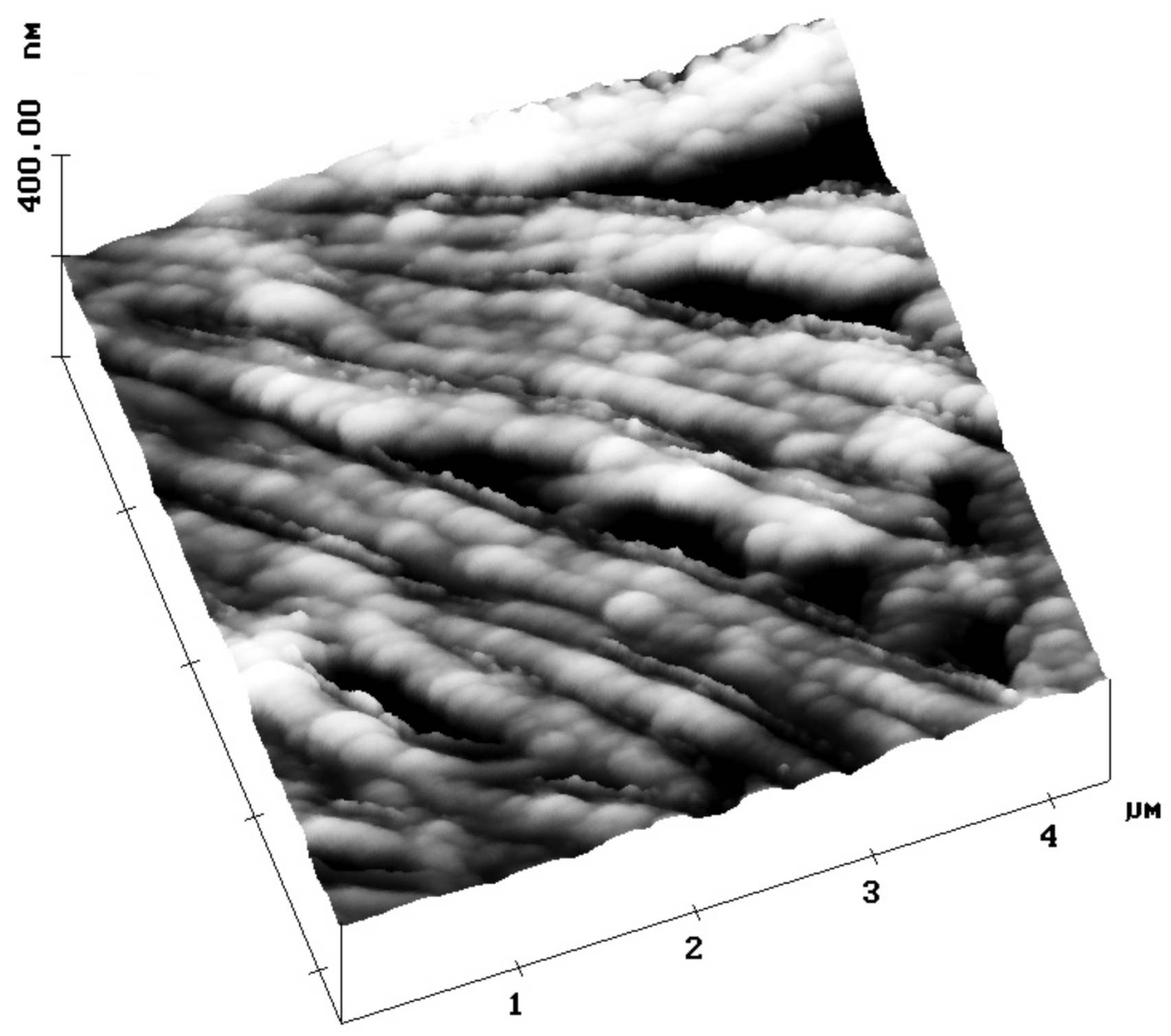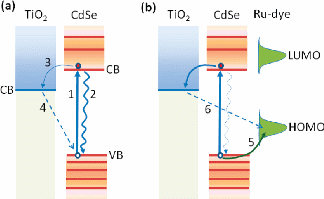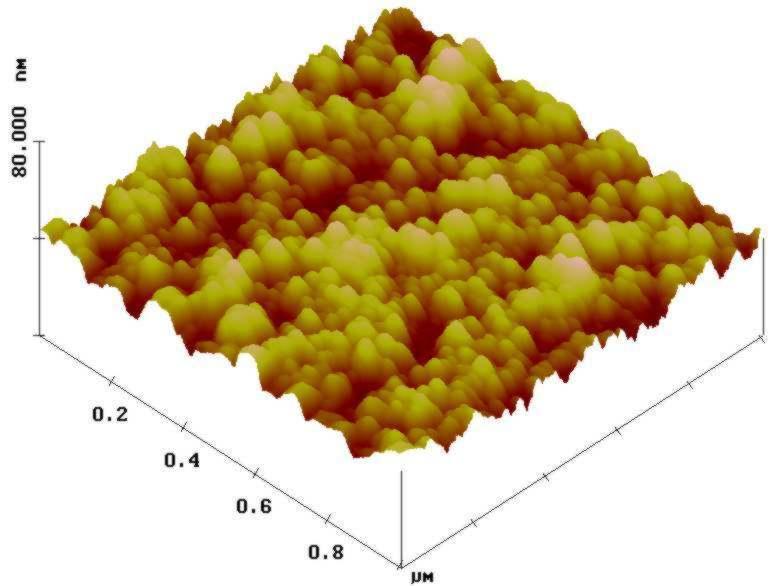
Photo-redox Conversion and Storage of Solar Energy
Institute of Physical Chemistry/NCSR “Demokritos”

Laboratory Research Personnel
Dr. Polycarpos Falaras, Research Director, Director of the Institute of Physical Chemistry, Tel: +30 210 6503644, +30 210 6503632, Fax: +30 210 6511766, e-mail: papi"at"chem.demokritos.gr
Dr Athanassios Kontos (Researcher grade ‘C’) - akontos"at"chem.demokritos.gr
Dr. Vlassis Likodimos (Post doc Researcher) - likodimo"at"chem.demokritos.gr
Dr. Thomas Stergiopoulos (Post doc Researcher) - stergt"at"chem.demokritos.gr
Dr. Athanassios I. Kontos (Post doc Researcher) - athkontos"at"chem.demokritos.gr
Mr. Georgios Kantonis (M.Sc.-PhD) - kantonis"at"chem.demokritos.gr
Mrs Georgia Konti (M.Sc.-PhD) - gkonti"at"chem.demokritos.gr
Mrs Evaggelia Rozi (M.Sc.-PhD) - emptyhands67"at"hotmail.com
Mrs Niki Alexaki (M.Sc.-PhD) - nalexaki1"at"yahoo.gr
Mrs Antigoni Katsanaki (PhD student) - katsanakiant"at"yahoo.gr
Mr Naoum Vaenas (PhD student) - naoumisvaenas"at"gmail.com
Mrs Katerina Skandali (PhD student) - katskand"at"yahoo.gr
Mrs Maria Bidikoudi (PhD student) -
Mr Dimitrios Tsoukleris (technical staff) - dtsoukleris@chem.demokritos.gr
Scientific Collaborations
Demokritos: Dr. E. Tsilibari, Dr. G. Papavassiliou, Dr. A. Hiskia, Dr. G. Romanos, Dr. C. Vasilakos, Dr. V. Kilikoglou, Dr. N. Boukos, Dr. T. Stergiotis, Dr. K. Papadopoulos, Dr. G. Vougioukalakis, Dr. A. Provata, Dr. P. Aloupogiannis, Dr. K. Papadokostaki.
Greece: Prof. T. Albanis, Prof. P. Pomonis and Dr. M. Prodromides (Univ. Ioannina), Prof. P. Lianos and Prof. J. Kallitsis (Univ. Patras), Prof. J. Bartzis (Univ. Macedonia), Prof. I. Poulios (Univ. Thessaloniki), Prof. C.A. Mitsopoulou and Dr. A. Phillipopoulos, (Univ. Athens), Dr. Y.S. Raptis and Dr. E. Pavlatou (NTUA Athens), Dr. S. Pispas (NHRF), Dr. S. Neophytides (FORTH/ICE-HT)
International : Prof. Μ. Grätzel (EPFL Lausanne), Prof. D. Dionysiou (Univ. Cincinatti), Dr. G. Tulloch (Dyesol ltd., Australia), Dr. H. Snaith (Oxford), Prof. G. Thompson and Prof. P. Skeldon (Univ. Manchester), Prof. V. Catalano (Nevada), Prof. P. Schmuki (Univ. Erlagen), Prof. P. Potvin (Toronto), Prof. J. Bisquert (Un. Jaume I, Castello) and Prof. J. Dona Rodriguez (ULPGC-Canaria), Dr. MC Bernard (CNRS, Paris) and Dr. V. Hequet (Armines, Nantes), Dr. A. Silva (FEUP, Porto), Dr. E. Kantilaftis (Osmosistemi, Fano), IRT (London), Mr A. Katsifos (Italcementi Group)
Research Activities
Dye-sensitization of large band-gap semiconductors
Development of dye-sensitized solar cells (DSSCs) and optimization in terms of efficiency, life-time and stability, combining state of the art microscopic (AFM), spectroscopic (Raman) and electrochemical techniques (IMPS, IMVS).
|
|
|
|
|
Development, performance and optimization of dye-sensitised solar cells (prototypes). |
||
Nanostructured Titania synthesis
Controlling the semiconductor nanostructure using sol-gel templating synthesis and electrochemical self-assembly supported by versatile deposition techniques: screen-printing, doctor-blade, spin-coating, dip-coating and anodic oxidation in corrosive media. Essential emphasis is given to the design, synthesis/preparation, characterization, theoretical analysis/modeling and evaluation of performance of multifunctional inorganic photonic compounds [metal oxide thin films (of nanoparticles, nanospheres and nanotubes)].
|
|
|
|
Mesoporous TiO2 sol-gel synthesis of fractal nanostructured TiO2 films [P. Falaras et. al. Small, 2008. 4. 770. |
Titania nanotubes : T. Stergiopoulos, Nanotechnology, 2009, 20, 365601; T. Stergiopoulos et. al., 2008, 19, 235602] |
Dyes
Synthesis of light harvesting molecular antennas for efficient sensitization of large band-gap semiconductors.
|
Synthesis of new sensitizers Ru(II) complexes of bipy, terpy, phenanthroline and related ligands [G. Konti et. al., Photochem. Photobiol. Sciences, 2009, 8, 726]. Supramolecular dyes presenting broad and intense MLCT absorption bands in the visible [J.Faiz et. al.,Adv. Funct. Mater. 2007,17, 54], G.C. Vougioukalakis et al., Coord. Chem. Rev. 111299, in press. |
Redox electrolytes
Preparation of redox nanocomposite polymer electrolytes.


Preparation of novel composite solid-state or plasticized redox electrolytes. Use of nanocrystalline particles as fillers. [E. Chatzivasiloglou et al, Photochem. Photobiol. A: Chem., 2007, 192, 49]
Quantum dots

Co-sensitization of dye-modified TiO2 by CdSe QDs (J.Phys. Chem. C. 2010,114, 6755)
Microscopy and Spectroscopy for nanomaterials and nanotechnology applications
Morphological and spectroscopic features of Nanostructures Materials and NanoDevices.
Investigation, tuning and optimization of photoinduced processes taking place at the semiconductor/dye/electrolyte interface.
AFM and Raman
|
|
|
|
SEM and AFM characterization of TiO2 nanotubes, A.G. Kontos et. al. Nanotechnology, 2009, 20, 045603 |
Raman antenna effect observed in TiO2 Nanotubes. V. Likodimos et. al., J. Phys. Chem. C 2008, 112, 12687 |
|
|
|
|
In-situ Raman spectrophotoelectrochemistry, State of the art in situ and under aging Raman characterization of solar cell. A.G.Kontos et. al., 2008, 361, 761. |
Spectroscopic evidence of prolonged light and thermal stress effects on DSSCs V. Likodimos et. al. J. Phys. Chem. C, 2009, 113, 9412. |
Impedance, IMPS and IMVS
State of the art modulated electrochemical spectroscopy techniques
|
Intensity modulated photovoltage spectroscopy |
|
|
|
Intensity modulated photocurrent spectroscopy
|
|
|
|
Electrochemical Impedance |
|
|
Photocatalysis
Innovative nanostructured photocatalysts for environmental cleaning and health protection
Heterogeneous photocatalytic processes and related applications are investigated, involving functional photonic materials in the nanometer scale. The scientific effort aims at improving the efficiency of photocatalytic processes via: a) increase of the photocatalyst effective surface area; b) efficient separation of the photogenerated charge carriers (e- and h+); c) photocatalytic sensitization into the Vis light region-shift of the absorption onset; d) judicious balance of photocatalytic and superhydrophylic properties on multi-dynamic surfaces able to photochemically decompose harmful organics, kill bacteria and viruses and being easily self-cleaned; e) increased anticancer and anticoagulant action of titanium dioxide on neoplasm and inflammatory cells. Special emphasis is paid to the combination of advanced oxidation processes, titania modified nanomaterials and nanotechnology for water treatment.

|
|
|
|
Photocatalytic and superhydrophilic effects on TiO2 films with self cleaning properties |
Photocatalytic decomposition of cyanotoxin MC-LR under both UV and visible light V. Likodimos, et al., Rev. Environ. Sci. Bio/Tech: 9 (2010) 87-94 |
Non-metal and metal doping of nanostructured titania
|
|
|
|
Nitrogen doping of TiO2 nanoparticles with extensive visible light absorbance [A.I.Kontos et. al. Phys. Stat. Sol. RRL 2008, 2, 83]. |
Surface Functionalization of Anodized TiO2 Nanotubes by Iron Oxide Nanoparticles [A.I.Kontos et al. Chem. Mater. 2009, 21, 662]. |
Photocatalytic reactors
Design and fabrication of novel liquid and phase photocatalytic reactors
|
|
|
Testing of titania based slurries and immobilized photocatalysts for air purification and water purification [A.G. Kontos et. al. Chem. Phys. Lett., 2010, 490, 58; D.S. Tsoukleris et. al., Catalysis Today, 2007, 129, 96]; Appl. Catal B. Env., 2010, 95, 78. |
Anticancer effects
Photocatalytic killing of cancer cells (Sarcoma cells, epithelial breast cells)
|
|
|
|
Effects of UV-irradiated titania nanoparticles on cell proliferation, cancer metastasis and promotion. Catal. Tod. 2010, 151,58 ; J. Photochem. Photobiol. A, 2010 |
|
Self cleaning effects. Photoinduced hydrophilicity under visible light
|
|
|
|
Nanostructured N-F co-doped titania films present reversible visible light induced hydrophilicity to a final contact angle of 8o. Photochem. & Photobiol. Scien. 2010. |
|
EU Projects
|
“Ti-nanotubes” - Preparation, Characterization and Application of Self-Organized Titanium Oxide Nanotubes
NMP4-CT-2006-033313
2006-2009 |
|
|
“Clean Water” - Water Purification Using Innovative vi-nanocatalysts
FP7-ENV-NMP-2008-2 STREP
Coordination of the project
2009-2012 |
|
|
“SANS”- Sensitizer Activated Nanostructured Solar Cells
FP7-NMP-2009-SMAll-3
2010-2013 |
|
|
|
|
|
|
|